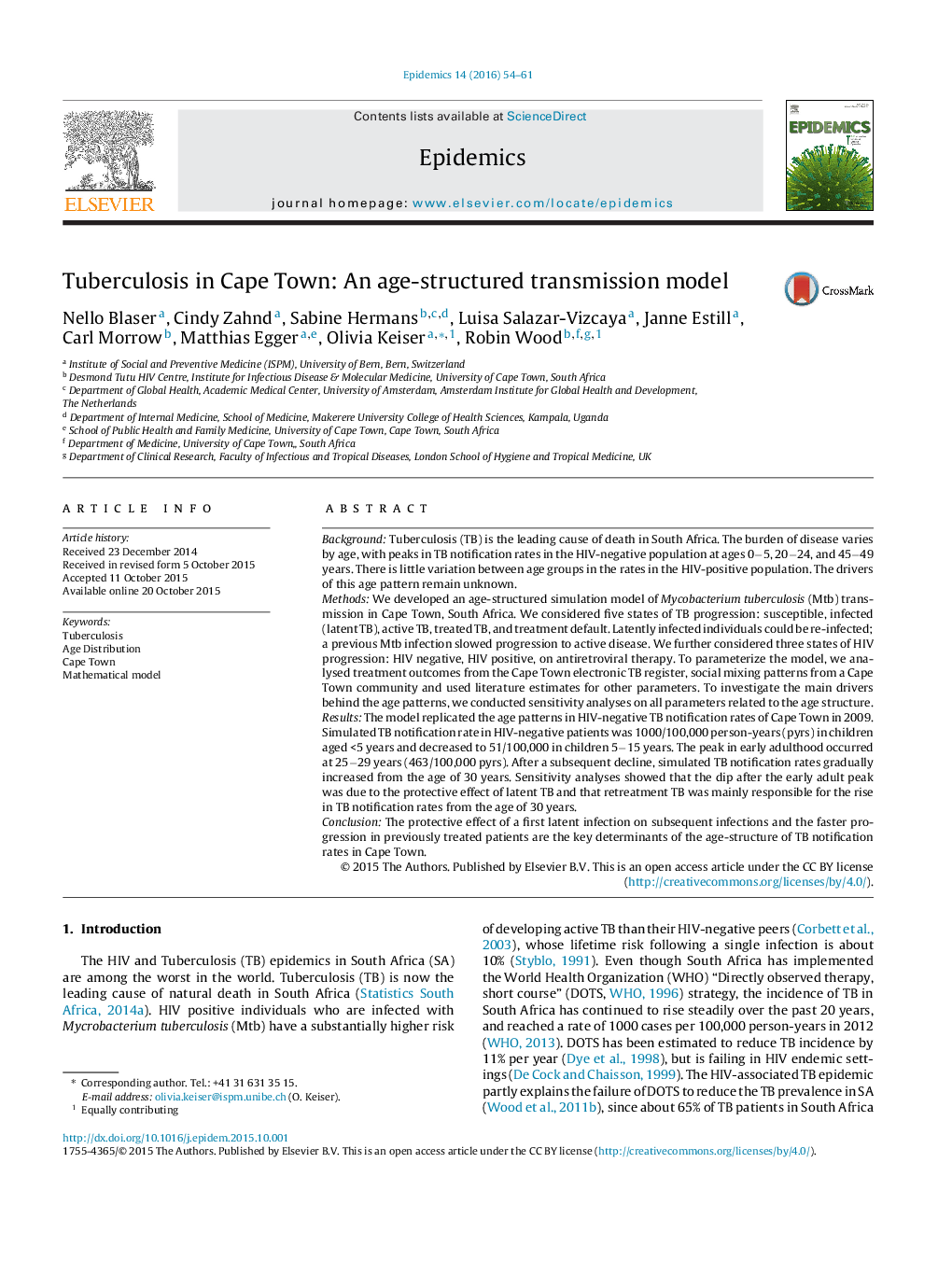| کد مقاله | کد نشریه | سال انتشار | مقاله انگلیسی | نسخه تمام متن |
|---|---|---|---|---|
| 2813488 | 1569433 | 2016 | 8 صفحه PDF | دانلود رایگان |
• We modeled the age pattern of the TB transmission dynamics of Cape Town.
• We replicated the age pattern in HIV-negative TB notification rates in 2009.
• TB declined after age 25 because of a protective effect of previous infection.
• The increase in TB in 30–50 year old HIV-negatives was due to retreatment TB.
BackgroundTuberculosis (TB) is the leading cause of death in South Africa. The burden of disease varies by age, with peaks in TB notification rates in the HIV-negative population at ages 0−5, 20−24, and 45−49 years. There is little variation between age groups in the rates in the HIV-positive population. The drivers of this age pattern remain unknown.MethodsWe developed an age-structured simulation model of Mycobacterium tuberculosis (Mtb) transmission in Cape Town, South Africa. We considered five states of TB progression: susceptible, infected (latent TB), active TB, treated TB, and treatment default. Latently infected individuals could be re-infected; a previous Mtb infection slowed progression to active disease. We further considered three states of HIV progression: HIV negative, HIV positive, on antiretroviral therapy. To parameterize the model, we analysed treatment outcomes from the Cape Town electronic TB register, social mixing patterns from a Cape Town community and used literature estimates for other parameters. To investigate the main drivers behind the age patterns, we conducted sensitivity analyses on all parameters related to the age structure.ResultsThe model replicated the age patterns in HIV-negative TB notification rates of Cape Town in 2009. Simulated TB notification rate in HIV-negative patients was 1000/100,000 person-years (pyrs) in children aged <5 years and decreased to 51/100,000 in children 5−15 years. The peak in early adulthood occurred at 25−29 years (463/100,000 pyrs). After a subsequent decline, simulated TB notification rates gradually increased from the age of 30 years. Sensitivity analyses showed that the dip after the early adult peak was due to the protective effect of latent TB and that retreatment TB was mainly responsible for the rise in TB notification rates from the age of 30 years.ConclusionThe protective effect of a first latent infection on subsequent infections and the faster progression in previously treated patients are the key determinants of the age-structure of TB notification rates in Cape Town.
Journal: Epidemics - Volume 14, March 2016, Pages 54–61
